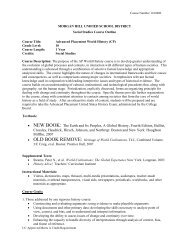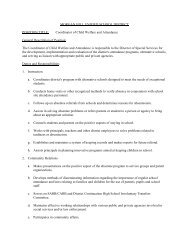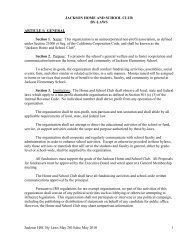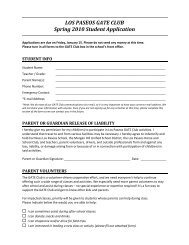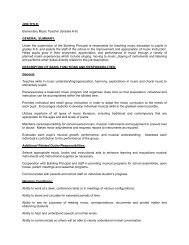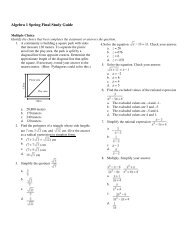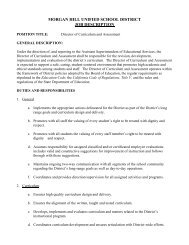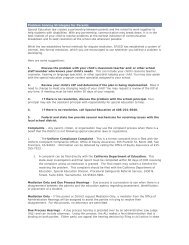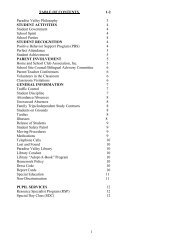8th Grade US History
8th Grade US History
8th Grade US History
You also want an ePaper? Increase the reach of your titles
YUMPU automatically turns print PDFs into web optimized ePapers that Google loves.
• Students analyze the character and lasting consequences of Reconstruction.• Students analyze the transformation of the American economy and the changing social andpolitical conditions in the United States in response to the Industrial Revolution.Outline of CourseConstitutional Democracy• The relationship between the moral and political ideas of the Great Awakening and thedevelopment of revolutionary fervor.• The philosophy of government expressed in the Declaration of Independence with an emphasison government as a means of securing individual rights (e.g., key phrases such as “…all Men arecreated equal, that they are endowed by their Creator with certain unalienable rights”).Elements of the Constitution:• The significance of the Magna Carta, the English Bill of Rights, and the Mayflower Compact.• The Articles of Confederation and the Constitution, and the success of each in implementing theideals of the Declaration of Independence.• The major debates that occurred during the development of the Constitution and their ultimateresolutions on areas such as shared power among institutions, divided state-federal power,slavery, the rights of individuals and states (later addressed by the addition of the Bill of Rights),and the status of American Indian nations under the commerce clause.• The political philosophy underpinning the U.S. Constitution as specified in The Federalist(authored by James Madison, Alexander Hamilton, and John Jay) and the role of such leaders asJames Madison, George Washington, Roger Sherman, Gouverneur Morris, and James Monroe inthe writing and ratification of the Constitution.• The powers of government enumerated in the Constitution and the fundamental liberties ensuredby the Bill of Rights.• The principles of federalism, dual sovereignty, separation of powers, checks and balances, thenature and purpose of majority rule, and how the American idea of constitutionalism preservesindividual rights.Foundation of the American political system• The advantages of a “common market” among states as foreseen and protected by theConstitution’s clauses on interstate commerce, common coinage, and full-faith and credit.• The conflicts between Thomas Jefferson and Alexander Hamilton that resulted in the emergenceof two political parties (e.g., view of foreign policy, Alien and Sedition acts, economic policy,National Bank, funding and assumption of the revolutionary debt)• The significance of domestic resistance movements and ways in which the central governmentresponded to such movements (e.g., Shays’ Rebellion, the Whiskey Rebellion)• The basic law-making process and how the design of the U.S. Constitution provides numerousopportunities to participate in the political process and to monitor and influence government (e.g.,functions of elections, political parties, interest groups) the functions and responsibilities of a freepress.People of the New Nation• Its physical landscapes and political divisions and the territorial expansion of the U.S. during theterms of the first four presidents.• The policy significance of famous speeches (e.g., George Washington’s Farewell Address,Jefferson’s Inaugural, John Q. Adams Fourth of July 1821 address).



